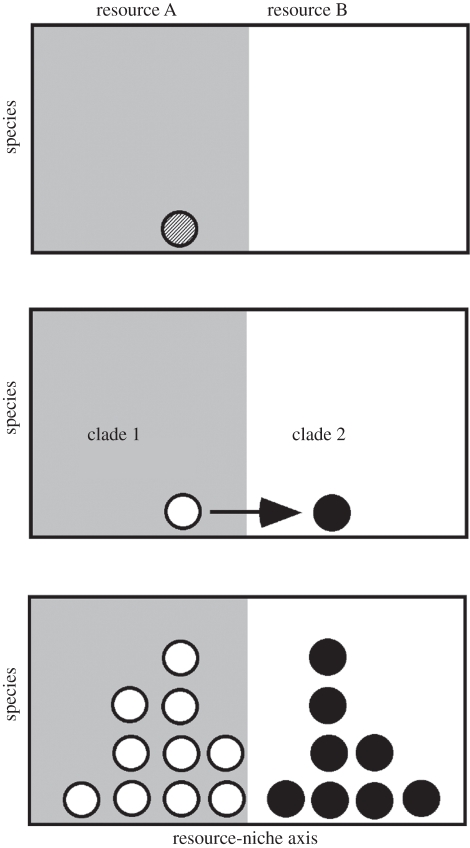Figure 2.
Simple hypothetical example illustrating the diversification of a group in a region over time along a resource-niche axis (which can be divided into two major resource types, A and B). Circles represent the mean position of each species on the niche axis, open circles indicate species of clade 1, filled circles indicate species of clade 2 and the circle with lines indicates the common ancestor of these clades. (a) The biogeographic region is first colonized by a species having a given mean position on the niche axis and using resource A. (b) Given that resources along most of the niche axis are initially not used, there is a rapid splitting into two species (the ancestors of clades 1 and 2) that specialize on different resources and occupy different positions along the niche axis. (c) Once both resources are occupied (i.e. at least one species uses each), there are no further evolutionary transitions between the two resources between the two clades (i.e. competition limits further major trait changes). Nevertheless, species continue to accumulate in each clade, with species in each clade using the same major resource type. The co-occurrence of species sharing the same resource type may be facilitated by the ecological similarity of these species (competitive exclusion takes a very long time when the species are ecologically similar), or by ecological divergence on other resource-niche axes.

